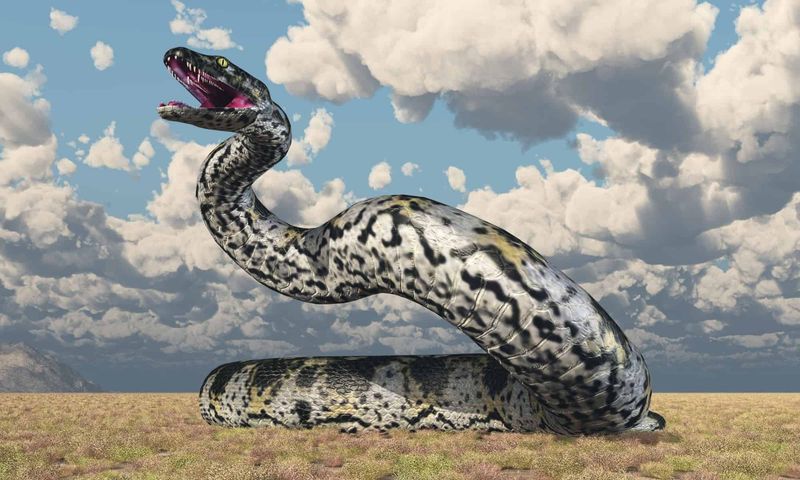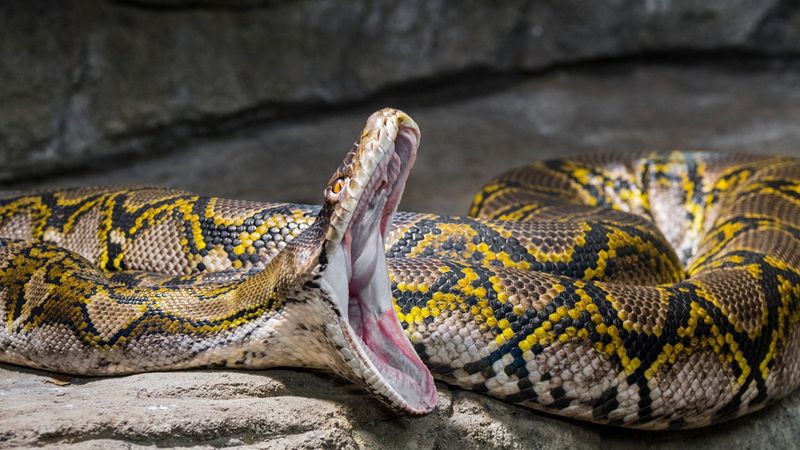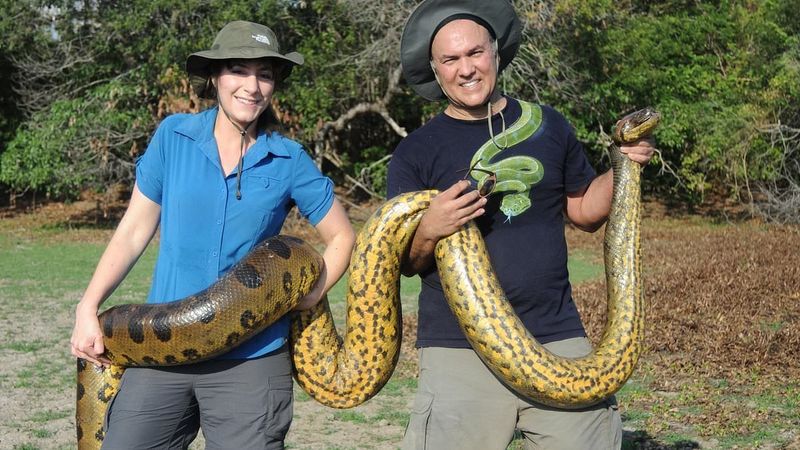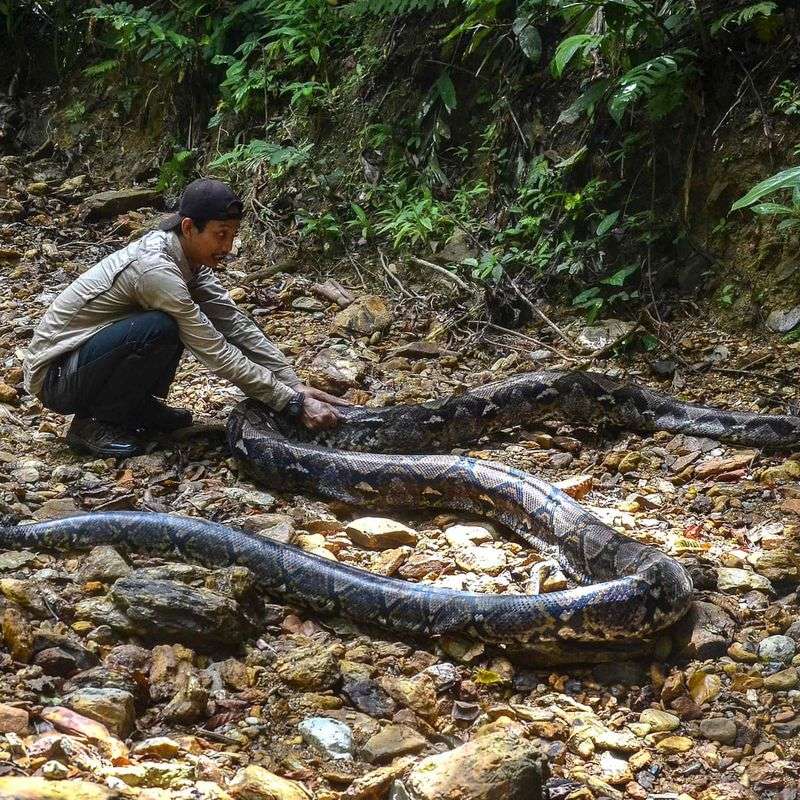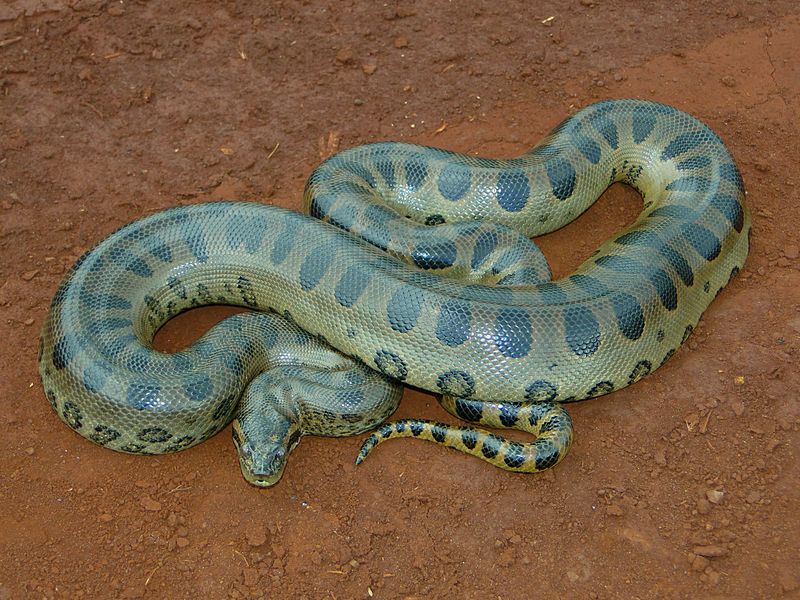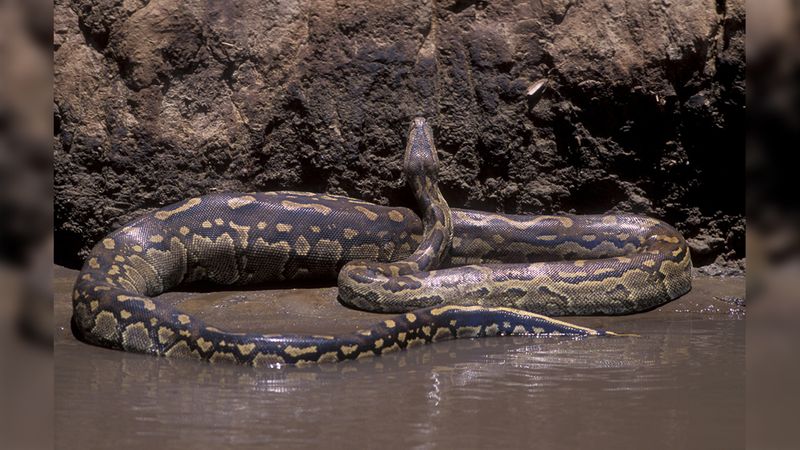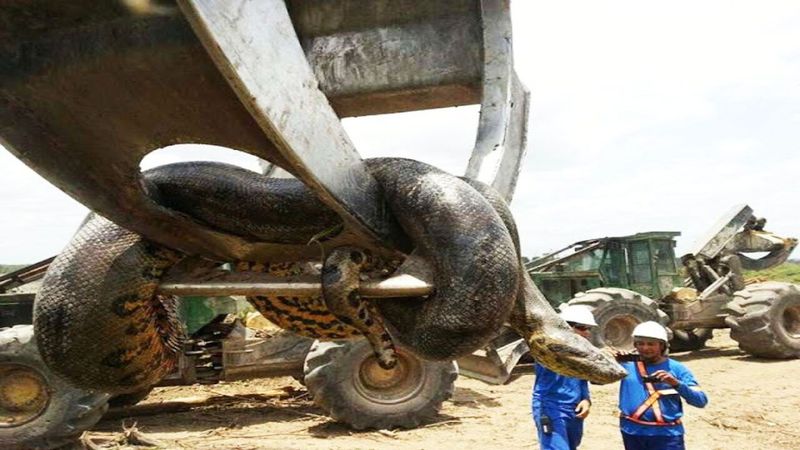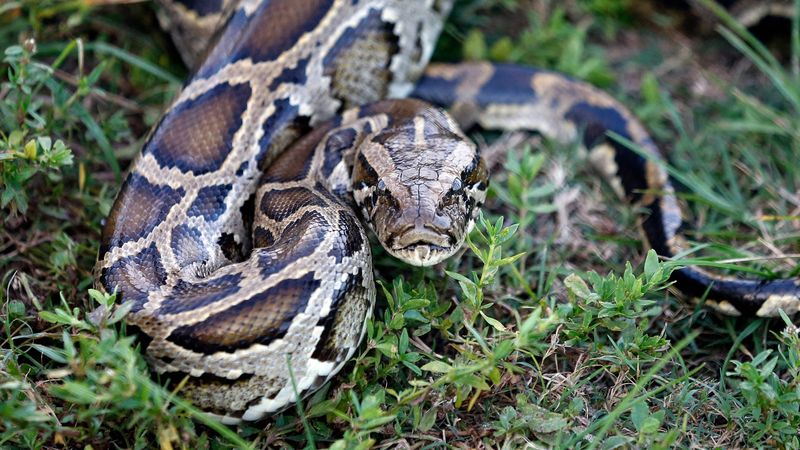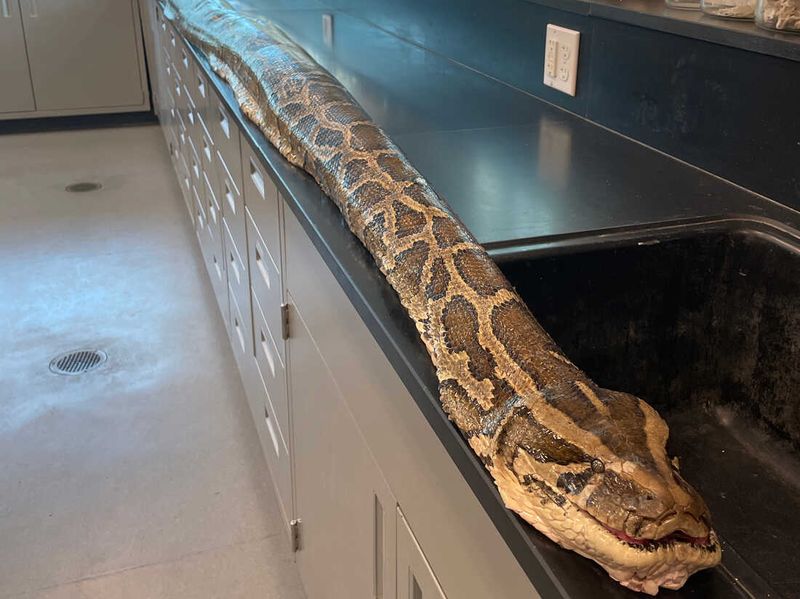Throughout history, humans have been both fascinated and terrified by the colossal sizes that some snakes can reach.
From ancient giants to modern-day behemoths, these serpents capture our imagination and remind us of nature’s awe-inspiring scale.
In this blog post, we explore ten of the biggest snakes ever discovered, delving into their unique attributes and remarkable stories.
Titanoboa (Extinct)
The Titanoboa is the largest snake ever known, reaching over 42 feet in length. This prehistoric serpent lived around 60 million years ago, during the Paleocene epoch, and its remains were discovered in Colombia. Paleontologists believe that its habitat was a hot, humid rainforest, which allowed it to thrive.
The sheer size of Titanoboa likely made it the apex predator of its time. It preyed on large fish and crocodiles, using its immense strength to constrict and subdue them. The discovery of this giant snake has provided valuable insights into the ancient ecosystems of South America.
Medusa (Reticulated Python)
Medusa holds the Guinness World Record for the longest living snake in captivity, measuring an astounding 25.2 feet. This Reticulated Python resides in Kansas City, Missouri, and has become something of a celebrity. Visitors flock to see her impressive length and marvel at her patterns.
Her diet consists of rabbits, deer, and other large mammals, which she consumes whole. Despite her formidable size, Medusa is known for her gentle demeanor, handled regularly by her caretakers. Her story highlights the dedication required to care for such a remarkable animal.
Anaconda Found in Brazil (2023)
In 2023, a gigantic Anaconda was discovered in the Amazon River, measuring over 26 feet. This find amazed scientists and locals alike, as it ranks among the largest ever recorded in the region. The snake’s impressive size is a testament to the rich biodiversity of the Amazon.
These snakes are known for their muscular build, allowing them to constrict and overpower prey such as capybaras and caimans. This particular Anaconda’s discovery sheds light on the hidden giants of the rainforest and the ecological roles they play.
The Giant Borneo Python
Discovered in 1912, the Giant Borneo Python is one of the longest reticulated pythons ever recorded, measuring 32 feet. Its discovery was a significant event, adding to the lore surrounding these impressive reptiles.
The lush forests of Borneo provide an ideal habitat for these snakes, offering abundant prey and cover. These pythons are known for their striking coloration and remarkable adaptability, which allows them to thrive in such diverse environments.
The Giant Borneo Python continues to be a symbol of the mysterious wildlife inhabiting Southeast Asia.
Green Anaconda Found in Venezuela
The Green Anaconda found in Venezuela measured an impressive 27 feet and was one of the heaviest snakes ever recorded, estimated at over 500 pounds. This gigantic snake exemplifies the formidable nature of anacondas, known for their strength and size.
Living near water, these snakes are excellent swimmers and often hunt aquatic and terrestrial prey. The Venezuelan anaconda’s size and weight demonstrate the thriving ecosystems of the Amazon basin, where such giants can still be found in the wild.
Reticulated Python in Indonesia
In 2002, a Reticulated Python measuring 28.5 feet was discovered in Indonesia, weighing over 550 pounds. This snake’s immense size and weight made headlines, showcasing the extraordinary lengths these reptiles can achieve.
Reticulated pythons are known for their striking patterns and adaptability, thriving in a variety of environments across Southeast Asia. This particular python’s size is a rare example of the extremes in nature, emphasizing the need for conservation efforts to protect these magnificent creatures and their habitats.
Large Anaconda Found in Brazil (2016)
In 2016, a large Anaconda was spotted in a Brazilian cave, measuring 33 feet. Captured on video, this snake’s massive size confirmed its status as one of the largest ever documented. The footage gained widespread attention, sparking interest in these mysterious giants.
Anacondas are well-suited to their environment, capable of traversing land and water with ease. Their presence in caves highlights their adaptability, seeking shelter and hunting opportunities. This discovery underscores the wonders hidden within the Amazon’s depths.
The “Monster Python” of Sulawesi
The “Monster Python” of Sulawesi was a 30-foot snake that gained notoriety after it tragically killed a local farmer. This shocking event captivated the community and drew attention to the sheer power and danger of these reptiles.
Located in Indonesia, Sulawesi’s lush environment supports a diverse range of wildlife, including these massive pythons. Such incidents highlight the delicate balance between humans and nature, emphasizing the need for awareness and education about living alongside such formidable creatures.
Giant Python in Malaysia (2016)
In 2016, a giant python measuring 26 feet was captured at a construction site in Malaysia. Its discovery was astonishing, marking it as one of the longest snakes ever found.
The python’s presence at a construction site underscores the ongoing intersection between development and wildlife habitats. Such incidents remind us of the importance of respecting the natural world and the creatures that inhabit it.
This python’s capture was a testament to the challenges and surprises that arise when human activities encroach on nature.
Burmese Python in Florida
The Burmese Python found in Florida holds the record as the largest python ever captured in the U.S., measuring 19 feet. Discovered in the Everglades, this snake is part of an invasive population posing ecological challenges in the region.
These pythons, native to Southeast Asia, have thrived in Florida’s wetlands, preying on local wildlife and disrupting the ecosystem. Efforts to manage their population include organized hunts and research into their habits.
This python’s capture highlights the ongoing struggle to balance conservation and control in the face of invasive species.

